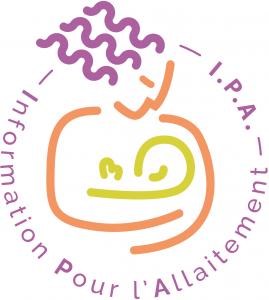Catégories
Documents disponibles dans cette catégorie (225)
Article : texte imprimé
Karen C. Schliep, Auteur ; Daniel Denhalter, Auteur ; Lisa H. Gren, Auteur |"Introduction: Hospitals are in a unique position to promote, protect, and support breastfeeding. However, the association between in-hospital events and breastfeeding success within population-based samples has not been well studied. Materials[...]Article : texte imprimé
Ana Maria Linares, Auteur ; Mary K. Rayens, Auteur ; Ann Dozier, Auteur |Background: Although Hispanic mothers in the United States have slightly higher rates of breastfeeding initiation than the national average, they are more likely to supplement with formula. Objectives: To describe infant feeding decisions i[...]Article : texte imprimé
Rosann Edwards, Auteur ; Wendy Peterson, Auteur ; Joy Noel-Weiss, Auteur |Background: Young mothers have the lowest breastfeeding rates in Canada. Young mothers and their infants who access maternity shelters are especially at risk for poor outcomes, some of which breastfeeding may help to mitigate, yet little is kno[...]Article : texte imprimé
Marcia Maria Benvenuto de Oliveira, Auteur ; Zuleika Thomson, Auteur ; Marli Terezinha Oliveira Vannuchi, Auteur ; Tiemi Matsuo, Auteur |"The present study evaluated the breastfeeding practice of 278 preterm infants born at the University Hospital of Londrina, Paraná, Brazil, during hospitalization and in the first 6 months of life. Data were obtained from the hospital records, a[...]Article : texte imprimé
Anjana Srinivasan, Auteur ; Alex Al Khoury, Auteur ; Svetlana Puzhko, Auteur |Background: Infant tongue-tie can cause breastfeeding problems, which may be improved by frenotomy. However, controversy exists among the medical community. Research aim: To examine the influence of frenotomy on infants with posterior ankyl[...]Article : document cartographique imprimé
Kelley L. Baumgartel, Auteur ; Larissa Sneeringer, Auteur ; Susan M Cohen, Auteur |Wet-nursing was an essential practice that allowed for infant survival after many mothers died in childbirth. The story of wet-nursing is complicated by both religious pressures and cultural expectations of women. It is likely that these histori[...]Article : texte imprimé
Information on general anesthesia and breastfeeding is incomplete, and often of poor quality, but some generalizations can be made. General anesthesia might delay lactation postoperatively somewhat, but nursing right before anesthesia might redu[...]Article : texte imprimé
"Background: Availability of professional lactation support has been associated with increased breastfeeding rates; however, data about access to international board-certified lactation consultants are limited. Research Aims: The aims were [...]Article : texte imprimé
Abigail L. Liberty, Auteur ; Kathryn Wouk, Auteur ; Ellen M Chetwynd, Auteur |"Background: Significant disparities in breastfeeding support and practice exist in North Carolina. The Baby-Friendly Hospital Initiative is a worldwide intervention that encourages birth facilities to adopt specific practices in support of bre[...]texte imprimé
Muriel Ighmouracène, Auteur | 2014"Vais-je allaiter mon enfant ? Dès la grossesse, cette question se pose à toutes les mamans. Si 50% d'entre elles allaitent, cette pratique suscite encore aujourd'hui de nombreux questionnements et apriori. Organisé chronologiquement, depuis le[...]texte imprimé
"Breastfeeding is the natural and healthy way to nourish your baby, yet it's not always easy. New mothers need practical information about getting off to a good start and solving breastfeeding challenges. Health professionals need this informati[...]Article : texte imprimé
Jane Morton, Auteur |Since the early 2000s, there has been encouragement in the lactation/midwifery/nursing literature to use a hands-off approach to lactation support, believing this empowers mothers and demonstrates respect for their bodies.1,2 These recommendatio[...]Article : texte imprimé
Florian Steger, Auteur ; Oxana Kosenko, Auteur |“The mother’s milk collecting station should be used where the breastfeeding of a vulnerable or sick infant is not possible” (Kayser, 1933, p.). The German pediatrician Marie-Elise Kayser (1885–1950) wrote those words in 1927. However, understan[...]Nouveauté
Article : texte imprimé
Background It is known that breastfeeding protects the infant from enteric and respiratory infections; however, the antiviral properties of human milk against enteric and respiratory viruses are largely unexplored. Research aims To explore [...]Bulletin : texte imprimé
Actes des journées nationales IHAB France, n°02 - 2e journée nationale IHAB - IHAB, simple slogan ou standard des soins
IHAB, Auteur | 2019Article : texte imprimé
"même dans ces pays, l’impact de pratiques d’allaitement non optimales est visible sur la prévalence des infections et celle des antibiothérapies et des hospitalisations en rapport avec ces infections. Le but de cette étude était d’évaluer l’imp[...]texte imprimé
mpact of Birthing Practices on Breastfeeding, Second Edition examines the research and evidence connecting birth practices to breastfeeding outcomes. It takes an in-depth look at the post-birth experiences of the mother and baby, using the baby[...]Article : texte imprimé
Victoria C. Scott, Auteur ; Yhenneko J. Taylor, Auteur ; Cecily Basquin, Auteur ; Kailas Venkitsubramanian, Auteur |Background: Although national breastfeeding rates have improved across recent decades, women continue to face barriers to achieving recommended breastfeeding targets. Returning to work presents a unique set of challenges for breastfeeding contin[...]Article : texte imprimé
Article : texte imprimé
Karleen Gribble, Auteur ; Kathleen A. Marinelli, Auteur ; Cecilia Tomori, Auteur |Key Messages Some COVID-19 policies separate infants and mothers, preventing or impeding breastfeeding, despite no evidence for vertical transmission of SARS-CoV-2 and generally mild symptoms in infants. Policies separating mothers and infan[...]Article : texte imprimé
Maaike Arts, Auteur ; Irum Taqi, Auteur ; France Bégin, Auteur |To ensure that newborns benefit optimally from breastfeeding from the first hour of life, health professionals and policy makers need to significantly improve the protection, promotion, and support for breastfeeding in maternity facilities. This[...]Article : texte imprimé
Induction of Lactation After Adoption in a Muslim Mother With History of Breast Cancer: A Case Study
Introduction With the prevalence of infertility increasing worldwide, many are seeking adoption to fulfill the need to start or expand their family. However, one of the challenges mothers face is the lack of the early maternal bond with the ado[...]Article : document cartographique imprimé
Maryam Sattari, Auteur ; Janet R Serwint, Auteur ; Jonathan J Shuster, Auteur |Background: Personal breastfeeding behavior of physician mothers is associated with their clinical breastfeeding advocacy, which in turn impacts patients' breastfeeding behavior. Internists can play an important role in breastfeeding advocacy as[...]Article : texte imprimé
Grace Pelak, Auteur ; Anna M. Wiese, Auteur ; Jennifer M. Maskarinec, Auteur |Background: Breastfeeding may protect against childhood asthma and allergic diseases. Studies have not focused on the mode of feeding human milk and followed children to school age although feeding human milk from a bottle rather than the breast[...]texte imprimé
MA Guillou, Auteur ; S Lingenheld, AuteurAnalyse des pratiques d'accompagnemnt de l'allaitement maternel à la maternité de Ploërmel sur la base des 10 conditions pour la réussite de l'allaitement de l'OMS et l'UNICEF. Evaluation des pratiques selon les normes IHAB, à partir des réponse[...]Article : texte imprimé
Article : texte imprimé
Background: According to the Baby Friendly Hospital Initiative, when supplementary feeding occurs, mothers should be counseled on the use and risks of feeding bottles and teats. To help support this initiative it is important to understand the [...]Article : texte imprimé
It's Not Yeast: Retrospective Cohort Study of Lactating Women with Persistent Nipple and Breast Pain
Ryan Colton Betts, Auteur ; Helene M Johnson, Auteur ; Eglash Anne, Auteur |Introduction: Health care providers treating lactating women for nipple and breast pain often attribute symptoms to Candida albicans infection. However, multiple other conditions may present with pain, erythema, and pruritis. We explored the exp[...]texte imprimé
40 articles de la conférence internationale sur l'allaitement maternel et le féminisme de 2013, autour de l’idée d'élever des enfants est un bien social et que “nos villages” peuvent soutenir les femmes en les aidant à intégrer le maternage à l[...]Article : texte imprimé
Salem A. Sallam, Auteur ; Gihan M. Babrs, Auteur ; Refaat R. Sadek, Auteur |Background: Breastfeeding within the first hour of life is a potential mechanism for health promotion and is considered to be an indicator of excellence of breastfeeding. This study was conducted to evaluate the knowledge, attitude, and practice[...]Article : texte imprimé
Shilpa N Naik, Auteur ; Akanksha Verma, Auteur ; gauri g Dhumal, Auteur |Breastfeeding is important to both the mother and child. World Breastfeeding Week, observed as a public health campaign in India, has played an important role in increasing knowledge and awareness about breastfeeding. This study aimed to fin[...]Article : texte imprimé
Jordyn T. Wallenborn, Auteur ; Timothy Ihongbe, Auteur ; Sylvia Rozario, Auteur |Background: According to the American Academy of Pediatrics, infants should be exclusively breastfed for the first 6 months of life followed by breastfeeding with complementary food for up to 2 years of age or beyond. Knowledge of breastfeeding [...]Article : texte imprimé
Ce Tian, Auteur |Background Donor milk is the preferred substitute to mother’s own milk, which can protect high-risk infants from many complications. Several milk banks have been established in China. However, the small number of donors and insufficient milk do[...]Article : texte imprimé
Key Messages Transgender and non-binary people have unique clinical needs when it comes to lactation, but research in this field is in its infancy. Issues encountered by transgender and non-binary lactating people and their health care provi[...]Article : texte imprimé
Erica H. Anstey, Auteur ; Martha Coulter, Auteur ; Cecilia M. Jevitt, Auteur |Background: Addressing suboptimal breastfeeding initiation and duration rates is a priority in the United States. To address challenges to improving these rates, the voices of the providers who work with breastfeeding mothers should be heard. [...]Article : texte imprimé
Joan Younger Meek, Auteur ; Jennifer M. Nelson, Auteur ; Lauren E. Hanley, Auteur ; Julie K. Wood, Auteur ; Ngozi Onyema-Melton, Auteur |Background: Breastfeeding is the preferred form of infant nutrition supporting optimal health of mothers and children. Research shows that medical training is deficient in preparing physicians to develop the knowledge base, clinical management s[...]Article : texte imprimé
Article : document cartographique imprimé
Lori Feldman-Winter, Auteur ; Jennifer Ustianov, Auteur |Objectives: As a method to increase exclusive and overall breastfeeding, the Centers for Disease Control and Prevention funded the National Institute for Children's Health Quality to run a national collaborative designed to accelerate the number[...]Article : texte imprimé
Helen Weinel, Auteur ; Lynette Cusack, Auteur |Key Messages The incidence of gestational diabetes mellitus is increasing worldwide. The introduction of antenatal human milk expression by women with pre-existing Type 1, Type 2, or gestational diabetes is an important maternity service ini[...]Article : texte imprimé
Background A primary role of human donor milk banks is to provide pasteurized human milk for the sick and preterm infant populations and to support the mothers of these infants as they establish their own milk supply. The results of human milk [...]Article : texte imprimé
Mourh Jasminder, Auteur ; Hilary Rowe, Auteur |With recent legalization of marijuana in numerous U.S. states, the risk of marijuana exposure via breast milk is a rising concern. This review analyzes the available human and animal literature regarding maternal use of marijuana during lactatio[...]Article : texte imprimé
By last count, 29 U.S. states and the District of Columbia have legalized marijuana (cannabis) for medicinal use.1 More to the point of the concern regarding cannabis use while breastfeeding is the reality that by mid-2017, seven U.S. states and[...]Article : texte imprimé
Tzu-I Tsai, Auteur ; Shu-Her Huang, Auteur ; Shoou-Yih D. Lee, Auteur |Continuity of breastfeeding is infrequent and indeterminate. Evidence is lacking regarding factors associated with breastfeeding at different postpartum time points. This prospective study investigated the change in, and correlates of, breastfee[...]Article : texte imprimé
Background Early breastfeeding practices are important determinants of later breastfeeding behaviors and can be influenced by multiple factors. Despite the Baby-Friendly Hospital Initiative reported positive influence on breastfeeding initiatio[...]Article : texte imprimé
Rachel Tinius, Auteur ; Nikitha Rajendran, Auteur ; Lauren Miller, Auteur ; Brenne Menke, Auteur ; Keri Esslinger, Auteur ; Jill Maples, Auteur ; Karen Furgal, Auteur |Background: Exercise during pregnancy and breastfeeding after pregnancy both positively influence a number of infant outcomes. However, whether physical activity during late pregnancy and breastfeeding postpartum influence motor development in t[...]Article : texte imprimé
Ranmali Rodrigo, Auteur ; Asiri Rodrigo, Auteur ; Nisansala Liyanage, Auteur |"Background: Sri Lanka boasts high rates of early and exclusive breastfeeding. Perceived inadequacy of milk, a global problem, is the main cause for early cessation of breastfeeding. Research Aims: The aims of this study are to (a) determin[...]













































